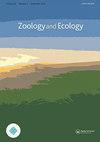Discovering the secret lives of White-headed Ducks: Unveiling population trends and phenology at Morocco’s two best wintering and nesting sites, Merja Fouwarate and Lake Sidi Boughaba
Q4 Environmental Science
引用次数: 0
Abstract
Due to its ongoing decline, the White-headed Duck (Oxyura leucocephala) is considered “endangered” and is, therefore, included in the IUCN Red List. It has been estimated that the species declined from 100,000 individuals in the early 20th century to only 8,000–13,000 individuals in the early 2000s. In order to investigate the trends and phenology of this species, we conducted fieldwork during the breeding and wintering seasons from 2011 to 2022 in Merja Fouwarate and at Lake Sidi Boughaba in Northwest Morocco. Our data show that the lowest numbers of individuals were observed in September, followed by a gradual increase throughout the autumn, reaching peak levels in the winter months between December and February. These peaks were observed in January at both locations in Merja Fouwarate, with 280 and 314 individuals recorded in 2021 and in 2022, respectively. At lake Sidi Boughaba, the peaks were lower, with 176 individuals recorded in 2021 and 120 individuals in 2022. In contrast, duck numbers declined throughout the spring, reaching their lowest point between March and May. In the course of the eleven-year observation period, the population of the species clearly increased. The population of Merja Fouwarate increased by 14.5 and 3.67 individuals on average each year, while that of Lake Sidi Boughaba increased gradually from 2011 to 2018 before declining in the years that followed.发现白头鸭的秘密生活:揭示摩洛哥两个最好的越冬和筑巢地点Merja Fouwarate和Sidi Boughaba的种群趋势和物候
由于白头鸭数量的持续减少,白头鸭被认为是“濒危物种”,因此被列入世界自然保护联盟红色名录。据估计,该物种从20世纪初的10万只减少到21世纪初的8000 - 13000只。为了调查该物种的变化趋势和物候特征,我们于2011年至2022年在摩洛哥西北部的Merja Fouwarate和Sidi Boughaba湖进行了野外调查。我们的数据显示,9月份观察到的个体数量最少,随后在整个秋季逐渐增加,在12月至2月之间的冬季月份达到峰值。一月份在Merja Fouwarate的两个地点都观察到了这些高峰,分别在2021年和2022年记录了280和314只。在西迪布哈巴湖,高峰较低,2021年记录了176只,2022年记录了120只。相比之下,鸭子的数量在整个春季都在下降,在3月到5月之间达到最低点。在11年的观察期中,种群数量明显增加。Merja Fouwarate的种群数量平均每年增加14.5只和3.67只,而Sidi Boughaba湖的种群数量从2011年到2018年逐渐增加,随后几年下降。
本文章由计算机程序翻译,如有差异,请以英文原文为准。
求助全文
约1分钟内获得全文
求助全文
来源期刊

Zoology and Ecology
Agricultural and Biological Sciences-Animal Science and Zoology
CiteScore
1.00
自引率
0.00%
发文量
1
 求助内容:
求助内容: 应助结果提醒方式:
应助结果提醒方式:


